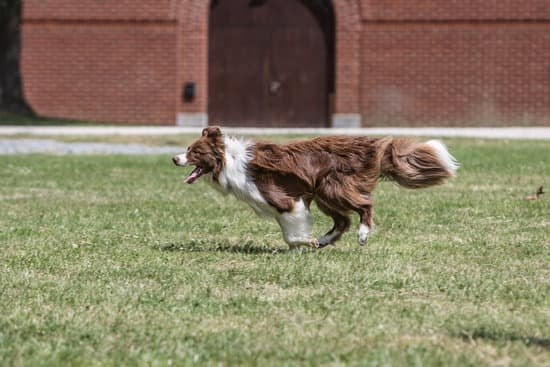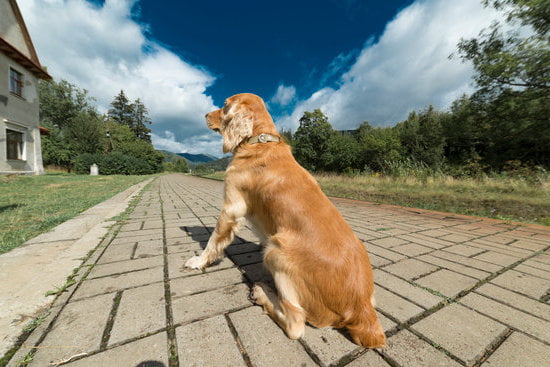Leash training is a crucial skill for adult dogs, as it not only ensures their safety but also enhances the bond between the dog and its owner. In this introductory section, we will explore the importance of leash training for adult dogs and discuss the challenges that may arise during this process compared to training a puppy.
Leash training provides numerous benefits for both the dog and the owner. For the dog, it allows them to explore the world safely while under control, preventing potential accidents or runaway situations. It also helps in managing their behavior by teaching them appropriate leash manners and commands. Additionally, leash training promotes mental stimulation and physical exercise, leading to a happier and healthier life for our furry friends.
Training an adult dog on a leash poses unique challenges compared to a puppy who has never been off-leash. Adult dogs may already have established habits or previous negative experiences with leashes, making them more resistant or fearful initially. However, with patience, consistency, and proper techniques, even adult dogs can be successfully leash trained.
In the upcoming sections of this article, we will delve into evaluating your dog’s behavior and readiness for leash training, choosing the right equipment for adult dogs, introducing your adult dog to the leash successfully, teaching basic leash manners and commands, troubleshooting common issues that may arise during training, transitioning to off-leash freedom gradually, and advancing their training skills.
By following these guidelines and tips throughout this comprehensive guide on how to leash train adult dogs effectively and confidently.
Evaluating Your Dog’s Behavior and Readiness for Leash Training
Before embarking on the leash training journey with your adult dog, it is important to evaluate their behavior and readiness for this process. Each dog has its own unique temperament, previous experiences, and health condition that must be taken into consideration when planning their leash training. By properly assessing these factors, you can set realistic expectations and adjust your training methods accordingly to ensure a successful outcome.
Temperament
Firstly, assess your dog’s temperament to determine how they might respond to leash training. Some dogs may be eager to learn and explore new experiences, while others may be more cautious or fearful. Understanding your dog’s temperament will help you tailor your approach to their individual needs. For example, a fearful dog may require extra patience and positive reinforcement techniques to build their trust in the leash.
Previous Experiences
Consider any previous experiences your adult dog may have had with leashes or being restrained in any way. If they had negative encounters or traumatic incidents related to being on a leash in the past, it could impact their willingness or ability to be trained effectively. Take note of any triggers or sensitivities that might arise during the training process so that you can address them appropriately.
Health Condition
Before starting leash training, ensure that your adult dog is in good physical health. Dogs with certain medical conditions or physical limitations may require modified training techniques or specialized equipment. Consult with your veterinarian if you have concerns about your dog’s ability to engage in leash training due to their health condition.
It is crucial to set realistic goals and expectations based on your evaluation of these factors. Remember that every dog is different and may progress at different rates during the leash training process. Be patient, understanding, and adaptable to accommodate your adult dog’s specific needs throughout their journey towards successful leash walking.
Choosing the Right Leash and Equipment for Adult Dogs
Choosing the right leash and equipment is crucial for successful leash training with adult dogs. The leash and equipment you select should be appropriate for your dog’s size, strength, and behavior. In this section, we will guide you on how to choose the perfect leash and equipment for your adult dog.
Selecting the Appropriate Leash
When choosing a leash for your adult dog, consider factors such as the material, length, and style. For larger, stronger dogs, a sturdy leash made of nylon or leather is recommended. These materials are durable and resistant to wear and tear. Smaller dogs may require a thinner or lighter leash to ensure comfortable handling.
The length of the leash also depends on your training goals and the environment in which you will be walking your dog. A standard six-foot leash is suitable for most scenarios as it allows enough freedom for exploration while maintaining control over your dog’s movements. However, if you prefer more flexibility or have trained off-leash recall commands successfully, retractable leashes can provide additional freedom for your adult dog.
Considering Additional Equipment
In addition to a suitable leash, there are other types of equipment that can aid in leash training with an adult dog. Harnesses are popular alternatives to traditional collars as they distribute pressure more evenly across the chest instead of focusing it on the neck area. This can be particularly beneficial if your adult dog tends to pull or has respiratory issues.
Another option to consider is hands-free leashes that allow you to walk or jog without constantly gripping the handle. Hands-free leashes usually consist of a waistband or belt connected to a bungee-style leash that absorbs shock from sudden pulls. This type of equipment can enhance comfort and convenience during walks or runs with your adult dog.
It is important to note that no single type of leash or equipment suits every dog perfectly. Take into account your individual circumstances and consult with a professional dog trainer or veterinarian if you need assistance in choosing the most suitable leash and equipment for your adult dog. Remember, the right tools can make a significant difference in the success of leash training and ensure both your dog’s safety and your control during walks.
Introducing Your Adult Dog to the Leash
When it comes to leash training an adult dog, it’s important to introduce them to the leash in a gradual and positive manner. This section will provide step-by-step instructions on how to make this introduction smooth and successful.
- Start by familiarizing your dog with the sight and smell of the leash. Show it to them without attaching it, allowing them to sniff and investigate it at their own pace. Reward any calm and curious behavior with treats or praise.
- Once your dog is comfortable with the presence of the leash, attach it to their collar or harness for short periods of time indoors. Allow them to walk around freely while supervised, making sure the leash doesn’t cause any discomfort or restrict their movement.
- Gradually increase the amount of time your dog wears the leash indoors before moving on to outdoor sessions. This will help them associate wearing the leash with positive experiences and eliminate any potential negative associations they may have developed.
- When you’re ready for outdoor sessions, choose a quiet and familiar environment that is free from distractions. Attach the leash and hold onto it loosely, allowing your dog to explore their surroundings while still feeling connected to you through the leash.
- Use treats and verbal praise as positive reinforcement when your dog walks calmly beside you or shows interest in following along on a loose leash. Remember to be patient and avoid pulling or forcing your dog if they resist initially-it’s important for them to feel that walking on a leash is their choice too.
- Gradually increase the difficulty level by introducing distractions such as other dogs, bicycles, or enticing smells. Practice basic commands like “sit,” “stay,” and “heel” during these sessions, rewarding your dog’s good behavior with treats or playtime breaks.
Remember that each dog is unique, so adjust these steps based on their individual needs and progress rate. If your adult dog shows fear, anxiety, or any other behavioral issues during the leash training process, it may be beneficial to seek professional help from a certified dog trainer or behaviorist. With patience, consistency, and positive reinforcement, your adult dog will soon become comfortable and confident on the leash.
Teaching Basic Leash Manners and Commands
When it comes to leash training an adult dog, teaching them basic leash manners and commands is a crucial step. These skills not only ensure the safety of both you and your dog during walks but also make the experience more enjoyable for everyone involved. Here are some essential leash manners and commands to focus on during your training:
- Loose Leash Walking: One of the most common challenges during leash training is dealing with a dog that pulls or tries to lead the way. Teaching your adult dog to walk on a loose leash is essential for a pleasant walking experience.
Start by rewarding your dog with treats or praise for walking alongside you without tension on the leash. Gradually increase the duration of loose leash walking, making sure to reward them frequently for their good behavior. - Sitting Before Crossing the Road: Safety is paramount when walking your adult dog outdoors, especially when crossing roads. Teaching them to sit before crossing can prevent accidents and protect both of you from harm. Use positive reinforcement techniques such as treats or verbal praise when they sit calmly before crossing the road, gradually reducing rewards as they become more reliable in this behavior.
- Avoiding Distractions: Dogs can easily get distracted by various stimuli while on a walk, such as other dogs, people, or wildlife. Training your adult dog to ignore distractions will help them stay focused on you and prevent unwanted behaviors such as lunging or pulling towards these distractions. Begin by practicing in low-distraction environments and gradually increase the level of distractions over time.
To effectively teach these basic leash manners and commands, positive reinforcement training methods work best. Rewarding desired behaviors with treats, praise, or play encourages your adult dog to repeat those behaviors in the future. Consistency is key; try to keep training sessions short but frequent to maintain their interest and progress.
Remember that each individual dog learns at their own pace, so be patient throughout the process. If you encounter any challenges or difficulties, consider seeking the assistance of a professional dog trainer who can provide guidance and additional training techniques to address specific issues.
By teaching your adult dog these basic leash manners and commands, you will not only have a well-behaved companion but also enjoy more harmonious and stress-free walks together. Stay consistent, patient, and always celebrate your dog’s progress to keep them motivated on their leash training journey.
Addressing Common Challenges and Troubleshooting Leash Training Issues
Leash training an adult dog can sometimes present challenges that need to be addressed in order to ensure a successful training experience. This section will discuss some common challenges that may arise during leash training and provide practical solutions and tips for troubleshooting these issues.
- Pulling: One of the most common challenges when leash training is dealing with a dog that constantly pulls on the leash. This can make walks uncomfortable and frustrating for both the dog and the owner. To address this issue, it is important to teach your adult dog loose leash walking.
Start by using a front-clip harness or head halter to give you more control over your dog’s movement. When your dog starts pulling, stop walking and wait for them to calm down before continuing. Reward your dog with treats or verbal praise when they walk beside you without pulling, and gradually increase the duration of their good behavior. - Lunging: Another challenge that may occur during leash training is when a dog lunges at other dogs, animals, or people while on a walk. This behavior can be dangerous and needs to be addressed as soon as possible.
Firstly, it is important to identify the trigger that causes your dog to lunge and keep them at a safe distance from it until they are calm. Use positive reinforcement techniques – rewarding your dog with treats or praise when they remain calm in the presence of triggers – and gradually decrease the distance over time. - Fear/Anxiety: Some dogs may exhibit fear or anxiety while being on a leash due to past negative experiences or lack of exposure. If your adult dog shows signs of fear or anxiety while being leashed, it is crucial to approach the issue with patience and positive reinforcement methods. Start by introducing the leash in a calm environment, associating it with positive experiences such as playtime or treats.
Gradually progress to clipping on the leash while providing treats and praise. If your dog continues to show fear or anxiety, it may be necessary to seek the assistance of a professional dog trainer or behaviorist.
In addition to these specific challenges, it is important to remember that every dog is unique and may have their own individual issues when it comes to leash training. It is essential to tailor your approach based on your dog’s needs, personality, and comfort level. Consistency, patience, and positive reinforcement are key factors in addressing leash training challenges and ensuring a positive experience for both the dog and the owner.
| Challenge | Solution |
|---|---|
| Pulling | Teach loose leash walking technique using rewards and controlled pauses. |
| Lunging | Gradually decrease distance from triggers while rewarding calm behavior. |
| Fear/Anxiety | Introduce leash in a positive manner, associate with rewards, seek professional help if needed. |
Gradually Transitioning to Off-Leash Freedom and Advanced Training
After successfully leash training your adult dog and establishing good leash manners, you may start to consider gradually transitioning them to off-leash freedom. This process requires careful training and ensuring that your dog has reliable recall and behavior even without a leash. It is important to prioritize safety and choose appropriate environments for off-leash training.
One of the first steps in transitioning to off-leash freedom is practicing in a secure, enclosed area such as a fenced backyard or a designated dog park. This allows your dog to explore the area while still having the safety of being within an enclosed space.
Start by letting them off the leash for short periods of time, closely observing their behavior and response to commands. Gradually increase the duration as they prove reliable in returning when called and following commands.
Positive reinforcement is key during this phase of training. Reward your dog with praise, treats, or their favorite toy every time they return promptly when called or follow a command without hesitation. This helps reinforce their good behavior and strengthens their recall.
As your dog becomes more comfortable with off-leash freedom in controlled environments, you can slowly introduce them to low-distraction areas such as quiet parks or nature trails. Be mindful of any potential hazards or distractions that may cause your dog to stray or become unfocused. Continue practicing recall exercises and reinforcing positive behavior.
It is important to note that not all dogs will reach a point where they can be trusted off-leash in all situations or environments. Some dogs may have higher prey drive, fear-based behaviors, or other factors that make it risky for them to be off-leash in certain settings. Always prioritize safety and use your judgment when determining if it is appropriate for your dog to be off-leash.
| Training Step | Description |
|---|---|
| Practice in secure, enclosed area | Start off-leash training in a secure, enclosed area such as a fenced backyard or dog park. Gradually increase the duration as your dog proves reliable in following commands and returning when called. |
| Use positive reinforcement | Reward your dog with praise, treats, or toys every time they respond promptly to recall or follow commands during off-leash training. This helps reinforce good behavior and strengthens their recall. |
| Introduce low-distraction areas | Slowly introduce your dog to low-distraction areas such as quiet parks or nature trails. Continue practicing recall exercises and reinforcing positive behavior. |
Conclusion
Leash training an adult dog may come with its challenges, but the joy and benefits that come with successfully completing this process are well worth the effort. Throughout this article, we have discussed various aspects of leash training for adult dogs, including evaluating their behavior, choosing the right leash and equipment, introducing them to the leash, teaching basic manners and commands, troubleshooting common issues, gradually transitioning to off-leash freedom, and emphasizing the importance of ongoing training.
By following these guidelines and being patient and consistent, you can establish a strong foundation of obedience and good behavior in your adult dog.
Leash training is not only essential for safety reasons but also for building a strong bond between you and your dog. It allows them to explore the world while remaining under control. The benefits extend beyond walks as well – it promotes mental stimulation by exposing them to different environments and keeps them physically active. Leash training provides a sense of leadership for both you and your dog, leading to a harmonious relationship based on trust and respect.
Remember that each dog is unique, so it is crucial to set realistic expectations based on their temperament, previous experiences, and health condition. Be flexible in adjusting your training methods to cater to your dog’s individual needs. When facing challenges during the leash training process, do not get discouraged. Seek professional help if necessary or reach out to fellow dog trainers or owners who have gone through similar experiences.
As you progress through the leash training journey with your adult dog, be sure to celebrate small victories along the way. Every step forward is an achievement for both of you. With patience, consistency, and lots of praise and positive reinforcement, you will soon enjoy the benefits of a well-behaved adult dog that walks politely on a leash by your side.
Frequently Asked Questions
Can an older dog be leash trained?
Yes, an older dog can definitely be leash trained. While it may take a bit more time and patience compared to training a young puppy, it is absolutely possible to teach an adult dog how to walk on a leash. The key is consistency and positive reinforcement.
Start by introducing the dog to the leash and collar gradually, allowing them to get used to the sensation and associating it with positive experiences such as treats or praise. Begin with short walks in low-distraction environments and gradually increase the duration and difficulty of the walks as your dog becomes more comfortable and responsive to your commands.
How do you train a grown dog on a leash?
Training a grown dog on a leash requires a combination of patience, consistency, and positive reinforcement techniques. Start by using a well-fitting harness or collar that provides control without causing discomfort for your dog. Begin in a quiet and familiar area with minimal distractions so that it’s easier for your dog to focus on you during training sessions.
Use treats, verbal praise, or other rewards to reinforce good behavior while walking on the leash. Always shorten the leash when guiding your dog’s attention back towards you if they start pulling or straying off track. Be patient with your furry friend as they learn appropriate leash manners, and remember to end each training session on a positive note.
Is it too late to leash train my dog?
It is never too late to leash train your dog, regardless of their age. Dogs are capable of learning new behaviors at any stage of life if we approach them with patience and consistency in training methods. While it might take longer for an older dog to break old habits or overcome anxieties associated with leashes, it is still possible with proper guidance and positive reinforcement techniques.
Keep in mind that each dog is unique, so adapt your training approach according to their individual needs and limitations. Seek professional help from a certified trainer or behaviorist if you encounter any difficulties during the process, as they can provide expert guidance tailored specifically for you and your furry companion.

Welcome to the blog! I am a professional dog trainer and have been working with dogs for many years. In this blog, I will be discussing various topics related to dog training, including tips, tricks, and advice. I hope you find this information helpful and informative. Thanks for reading!





